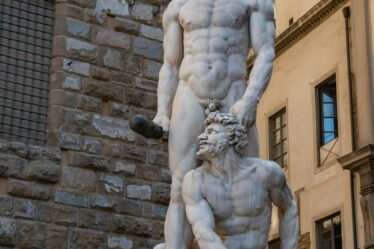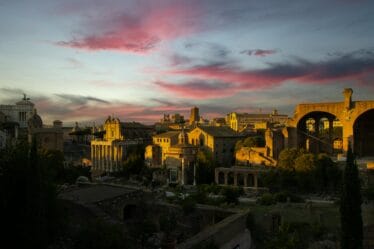
His work, which was inspired by models from classical antiquity and had a lasting influence on Western art, was born in the Republic of Florence. Along with his opponent and elder contemporary, Leonardo da Vinci, Michelangelo’s creative powers and mastery in a variety of artistic domains characterize him as an iconic Renaissance man. On March 6, 1475, Michelangelo was born in Caprese, now known as Caprese Michelangelo, a small village in Valtiberina, near Arezzo, Tuscany. His family had been small-scale bankers in Florence for several generations, but the business failed, and his father, Ludovico di Leonardo Buonarroti Simoni, briefly held a government office in Caprese, where Michelangelo was born. His father was the town’s judicial administrator and podestà or local administrator of Chiusi della Verna at the time of Michelangelo’s birth. Francesca di Neri del Miniato di Siena was Michelangelo’s mother. The Buonarrotis claimed to be descended from Countess Matilde di Canossa, a claim that has yet to be substantiated, but which Michelangelo accepted. The family returned to Florence, where Michelangelo was raised, some months after his birth. Michelangelo lived with a nanny and her husband, a stonecutter, in the town of Settignano, where his father owned a marble quarry and a small farm, during his mother’s subsequent extended illness and after her death in 1481 (when he was six years old).
New owner for Villa Michelangelo, on the hills of Florence, the only building still existing in its entirety, where he lived and worked Michelangelo Buonarroti. The historic residence, built between the fourteenth and fifteenth centuries, was recently sold for 8 million euros to a foreign investment fund. The sale was curated by Building Heritage, an exclusive partner for Italy of Forbes Global Properties, the reference point of the Real Estate market in the world. Located in the upper part of Settignano, a short distance from the center of Florence, the villa was an ancient property of the Buonarroti family. In his biographies, in fact, Michelangelo recalls how, after the birth in Caprese, he moved to the Florentine hill, where a nurse would have breastfeed with “Milk impatted with marble powder”, from which his early passion for sculpture derived. Here Michelangelo grew and worked so much that the home still kept his original work, the Triton, or Satyr, remained intact and currently in the availability of the previous owners. The villa still retains its original structure and develops on four levels, extending for about 900 square meters. The building has a square internal tower, used as a guard body, and is surrounded by a land consisting of a small orchard and a plantation of 200 olive trees, for an area of almost 1 hectare. The main facade has 2 outdoor outdoor terraces open, while on the ground floor there is a terrace discovered three times at a cruise with semicircular arches. If you want come to discover more about Michelangelo Life come with us. We are starting our Free Walking Tour, from Santa Maria Novella square.



